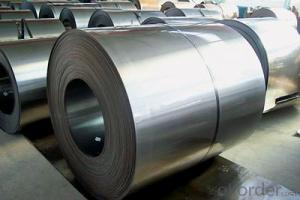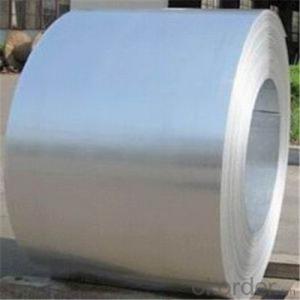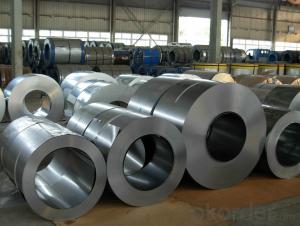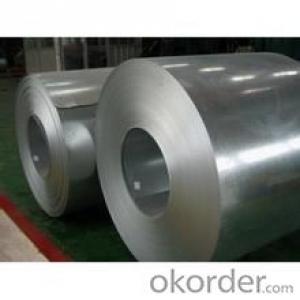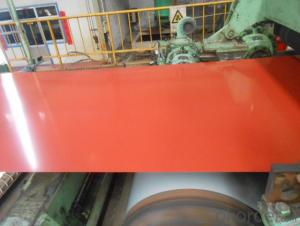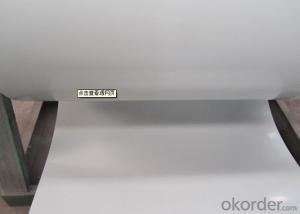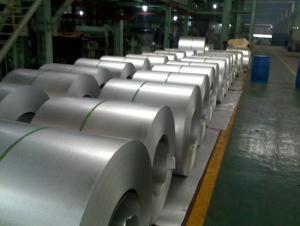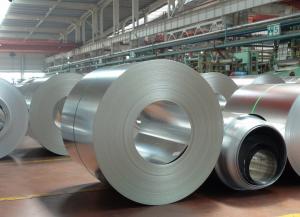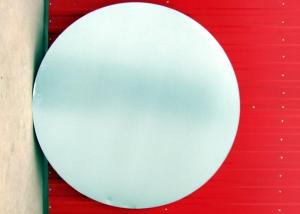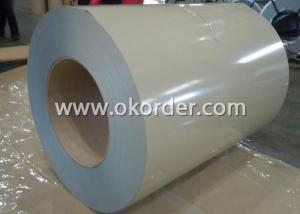cold rolled steel coil
- Loading Port:
- China Main Port
- Payment Terms:
- TT OR LC
- Min Order Qty:
- -
- Supply Capability:
- -
OKorder Service Pledge
OKorder Financial Service
You Might Also Like
Stanard | JIS G 3302-1998, ASTMA653M, GB/T 2518, Q/CHG3-2005, EN 10142 |
Grade | DX51D+Z, SGCC |
Thickness | 0.12mm-1.2mm |
Width | 15mm-1250mm |
Coil's weight | 4-10ton |
Coil's ID: | 508mm/610mm |
Substrate Base | hot rolled galvanized steel |
Surface Processing | Mini/Regular Spangle |
Place of origin: | Tianjin, China. |
Application: | steel structure, building exterior application,etc. |
MOQ: | 20mt |
Port: | Tianjin, China. |
Delivery time: | within 20 days after receiving the advanced T/T or L/C. |
Payment Terms | T/T or L/C |
Packing: | wrapped with waterproof paper inside, steel sheet outside,tiedby steel strip, supported by pallet, then loaded in container. |
Supply ability | 50,000metric tons per month or more |
As a professional manufacturer and exporter, we have all the necessary license as above.
With good quality and competitive price, we warm a good reputation in domestic and international markets.
We hope to build a good and long relationship with customers from home and abroad.
Any doubts & questions, pls feel free to contact me I shall be more than pleased to be on service of you.
- Q: How are steel coils used in the production of steel rings?
- Steel coils are used in the production of steel rings by being fed through a machine that cuts and shapes the coil into individual rings. These rings can then be further processed and manipulated to create a wide range of steel products, such as bearings, pipe fittings, or automotive components.
- Q: Can steel coils be coated with self-cleaning materials?
- Yes, steel coils can be coated with self-cleaning materials. These materials are typically hydrophobic or photocatalytic coatings that help prevent dirt, dust, and other contaminants from sticking to the surface of the steel. The self-cleaning properties of these coatings allow for easier maintenance and longer-lasting aesthetics of the steel coils.
- Q: What are the dimensions of steel coils used in automotive accessory manufacturing?
- The dimensions of steel coils used in automotive accessory manufacturing can vary depending on the specific application and requirements. However, typical dimensions for steel coils used in this industry range from 0.3 mm to 4.0 mm in thickness and from 600 mm to 2000 mm in width. The length of the coil can also vary, but it is commonly around 2000 meters.
- Q: How are steel coils used in the automotive stamping industry?
- Steel coils are used in the automotive stamping industry to provide a continuous supply of flat steel sheets that are then fed into stamping machines. These coils are unrolled, straightened, and then fed through the stamping presses to create various automotive parts, such as body panels, chassis components, and other structural parts. The use of steel coils ensures efficiency, precision, and a consistent quality in the production of automotive parts.
- Q: I want to save water $$, so I want to use frozen steel to cool my coke. possible or no?
- can't freeze it but ya can make it very cold
- Q: Myself, iam Working In a Steel Fabrication Company. I completed my Engineering in 2006 and immediately recruited in this company in Oman. My company is Steel Fabrication company .So as i am new to this field, i just need some basic knowledge regarding this Steel Fabrication.Waiting for ur early reply.
- There is SO much information regarding steel fabrication. A simple Google search could prove to be very helpful, but more than likely, you are going to need information from an actual company. Check these guys out. They seem to have quite a bit of information into their process. They also have a lot of process sheets.
- Q: How do steel coils contribute to the circular economy?
- Steel coils contribute to the circular economy through their recyclability and reusability. The circular economy aims to minimize waste and promote the continuous use of resources, and steel coils align perfectly with this concept. Firstly, steel coils are made from recycled steel, which reduces the need for extracting raw materials and the associated environmental impact. By using recycled steel, we can conserve natural resources and reduce energy consumption during the manufacturing process. This practice helps to lower carbon emissions and decrease the overall ecological footprint. Furthermore, steel coils can be easily recycled at the end of their lifecycle. Steel is one of the most recycled materials globally, with a high recycling rate. When the coils reach the end of their use, they can be collected, processed, and transformed into new steel products, without losing their properties or quality. This closed-loop recycling system ensures that steel resources are continuously utilized, minimizing the need for virgin steel production. Additionally, steel coils support the circular economy by enabling the creation of durable and long-lasting products. Steel is known for its strength and durability, making it ideal for various applications such as construction, automotive, and packaging. By using steel coils, we can produce products that have a longer lifespan, reducing the need for frequent replacements and minimizing waste generation. Moreover, steel coils can be reused multiple times before they are recycled. They can be rewound, reshaped, or repurposed for different applications, extending their lifecycle and reducing the demand for new coils. This reuse aspect of steel coils contributes to resource efficiency and waste reduction. In summary, steel coils play a significant role in the circular economy by being made from recycled steel, being easily recyclable themselves, enabling the creation of durable products, and promoting reuse. Their contribution helps to close the loop in the steel industry, conserves natural resources, reduces waste generation, and minimizes environmental impact.
- Q: i got a strip of steel from lowes how to sharpen it its not that thick its kinda slim but its heavyish its around 4'2 feet tall i cant get a whetstone or anything elsei have a brick , sand paper , and a hammer and some charcoal i was heating it up and trying to pound a edge into italso how to cut the steel to make a pointy curved tip any help appreciated and please tell me easy methodsplus its not sharp at all
- The okorder /
- Q: does he use a nylon guitar or steel?
- Clearly it's nylon strings. Didn't you ask this before? You can hear the difference in tone, and the construction of the guitar is different than a steel stringed model.
- Q: Perform three sets of 15 repetitions several times a week and you will soon have buns of steel.
- Steel muscles is very nice, but working on your contractions is a longer lasting necessity. In my opinion.
Send your message to us
cold rolled steel coil
- Loading Port:
- China Main Port
- Payment Terms:
- TT OR LC
- Min Order Qty:
- -
- Supply Capability:
- -
OKorder Service Pledge
OKorder Financial Service
Similar products
Hot products
Hot Searches
Related keywords
